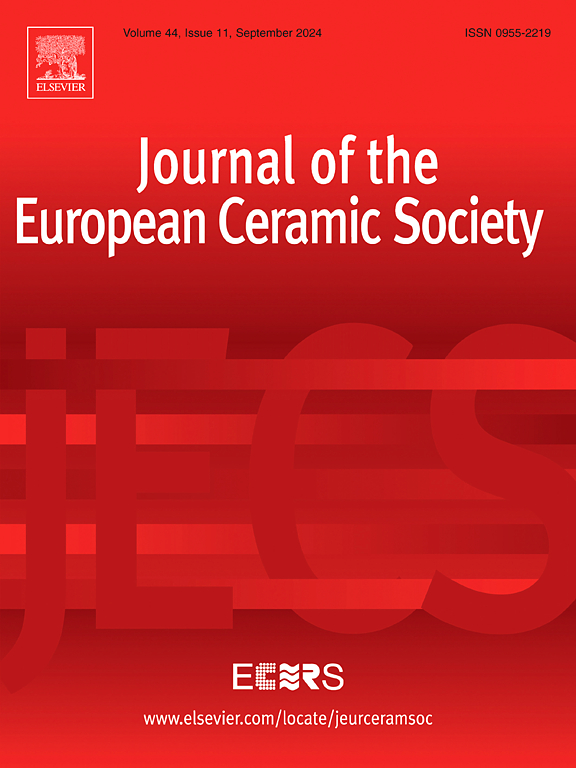Epoxide-oligosiloxane hybrid resin for enhanced ceramic shrinkage resistance
IF 5.8
2区 材料科学
Q1 MATERIALS SCIENCE, CERAMICS
Journal of The European Ceramic Society
Pub Date : 2025-02-07
DOI:10.1016/j.jeurceramsoc.2025.117270
引用次数: 0
Abstract
Heat treatment is essential for developing high-strength ceramics; however, maintaining dimensional stability post-treatment is challenging due to shrinkage and warpage. In this study, we synthesized sol-gel-derived cycloaliphatic epoxide oligosiloxane resins and applied them to ceramic bodies to enhance their shrinkage resistance. The optimal resin composition and synthetic conditions were determined by analyzing the bonding structures and thermal properties. The resin was blended with ceramic powders and heat-treated to assess its effects on fracture strength, thermal expansion, and dimensional stability. The hybrid binder with both organic and inorganic components significantly improved the mechanical properties and thermal stability of ceramics. Incorporating mixed particle sizes into the ceramic powder increased packing density, leading to a higher residual solid content after pyrolysis and reduced shrinkage during sintering. Even at temperatures above 1300 °C, minimal shrinkage was observed, making this approach promising for the production of high-performance ceramic parts for aerospace, automotive, and electronics applications.
求助全文
约1分钟内获得全文
求助全文
来源期刊

Journal of The European Ceramic Society
工程技术-材料科学:硅酸盐
CiteScore
10.70
自引率
12.30%
发文量
863
审稿时长
35 days
期刊介绍:
The Journal of the European Ceramic Society publishes the results of original research and reviews relating to ceramic materials. Papers of either an experimental or theoretical character will be welcomed on a fully international basis. The emphasis is on novel generic science concerning the relationships between processing, microstructure and properties of polycrystalline ceramics consolidated at high temperature. Papers may relate to any of the conventional categories of ceramic: structural, functional, traditional or composite. The central objective is to sustain a high standard of research quality by means of appropriate reviewing procedures.
 求助内容:
求助内容: 应助结果提醒方式:
应助结果提醒方式:


